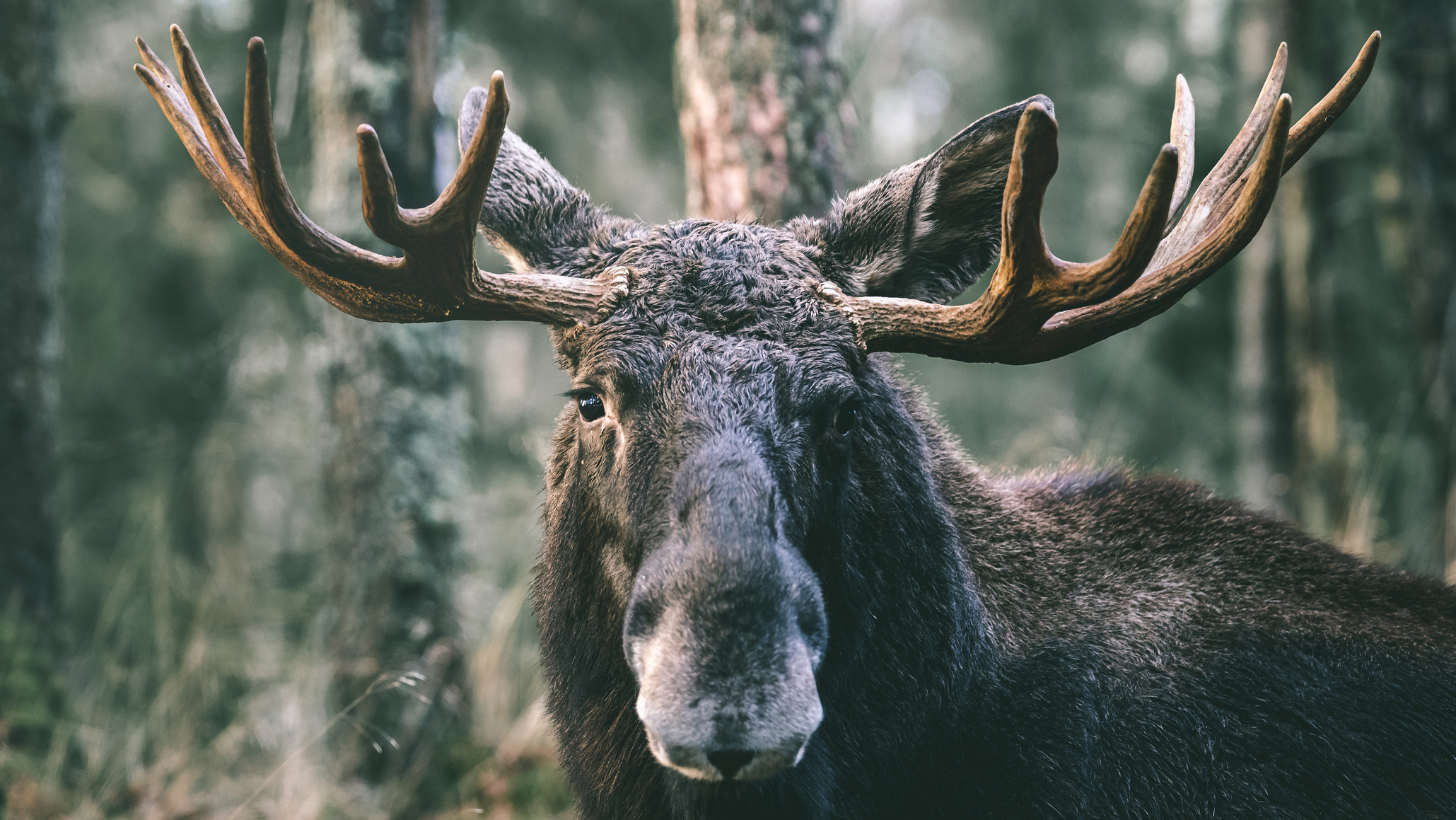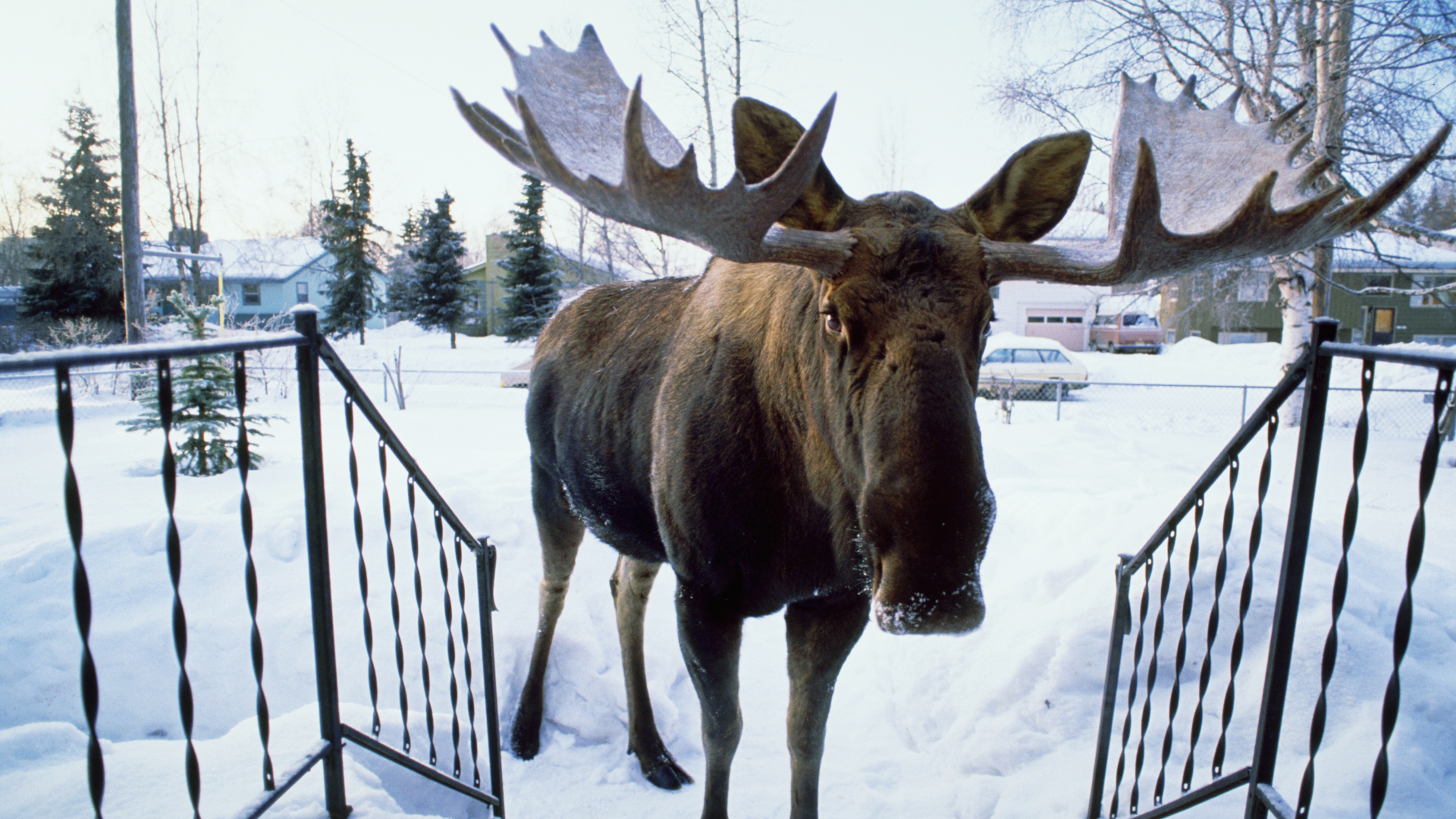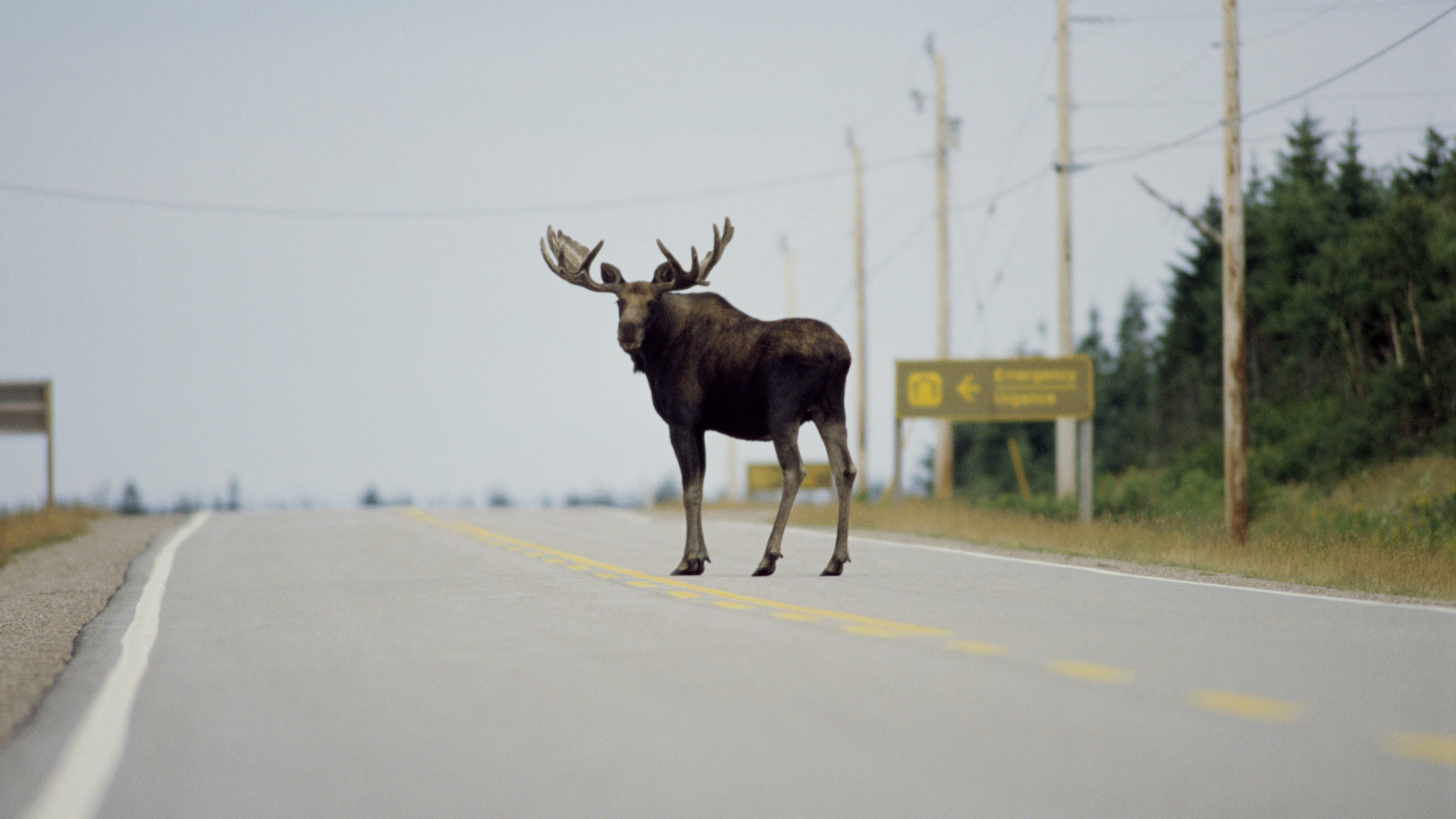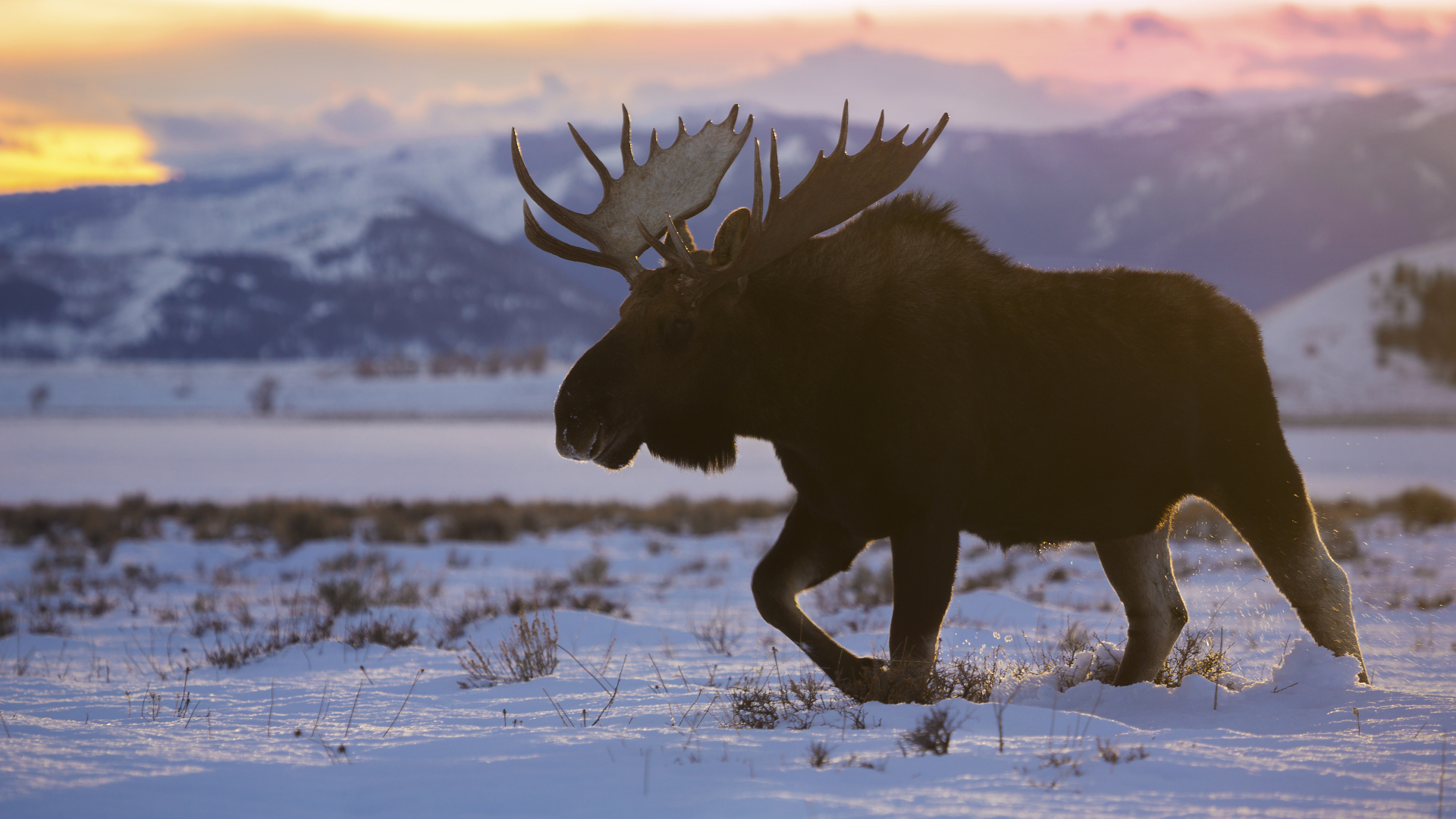What to do if you see a moose while hiking: our safety guide
Knowing what to do if you see a moose is important, particularly as moose attacks far outnumber bear attacks, despite their generally gentle nature

The majestic moose, the largest of the deer family, is a evocative sight in the North American wilderness. Of all the larger animals that you might encounter on the trail, the mighty moose may instill the least amount of fear. After all, it’s not likely to maul you like a grizzly bear or stalk you like a mountain lion. Moose are quiet and they definitely do not eat humans; in fact, their name comes from an Algonquin word meaning “eater of twigs”.
Moose stand on very skinny legs at an average of six feet tall from hoof to shoulder, plus then a couple more feet more for the head. The males feature splendid antlers up to six feet wide. These enormous creatures are vegetarians and live solitary lives after their first year of nursing.
The possibility of a moose sighting is probably more likely to inspire you to get your hiking boots on and grab your camera than to run in the opposite direction, so what’s to fear of these gentle giants? Well as it turns out, moose attacks are far more common than bear attacks, and knowing what to do if you see a moose while hiking could help keep you from being seriously injured.
Meet the expert

Julia moved to the US for university and developed a love for the great American outdoors. She enjoy tackling backcountry trails and bagged several Colorado 14ers while she was at it. Now back in her native Scotland, the red deer is the closest she comes to a moose these days. Regardless, she still keeps a close eye on developments across the Pond.
Today's best deals
Where can you find moose in the wild?
- Moose are found in the northern United States, Canada, European Baltic states, Poland, Kazakhstan and Russia
- There's an estimated one million moose in North America

In North America, moose are found in the colder climes of the northern United States and Canada, while elsewhere they roam in the Baltic states of Europe, Poland, Kazakhstan and Russia (where they're known as elk).
Believe it or not, there are a lot of moose in North America – an estimated one million of them roam the continent compared to just 600,000 black bears. Their natural habitat is in forested areas with water, but they are known to wander into urban areas in search of food. Moose sightings are most common at dawn and dusk.
Will a moose attack a human?
- Moose are not aggressive creatures and not inclined to attack humans
- However, they may charge if aggravated or threatened
- They can run at 35 mph and their poor eyesight means they may inadvertently trample someone

By nature, moose are not aggressive creatures and not inclined to attack humans. Like the best of us though, they can become aggressive when feeling threatened, particularly around their young or if they’re harassed by people or dogs and when they are food deprived or tired, which is common in winter. Under these circumstances, a moose may charge at you which some speculate is a bluff to get you to move out of their territory, however you never want to play chicken with a 1,000lb beast.
Despite their astonishing bulk and oddly spindly legs, when they want to, moose can charge towards you at 35 miles per hour. It’s also helpful to know that moose have very poor eyesight, so if they’re already on the go, they could trample you whether they mean it or not.
All the latest inspiration, tips and guides to help you plan your next Advnture!
In Alaska, moose attacks outnumber bear attacks about three to one, owing in part to their larger numbers. However, people are rarely killed by moose. Male moose are more likely to act aggressively in the fall during mating season, while females are more likely to do so in the late summer when they’re protecting their offspring.
What should you do if you encounter a moose?

If you’re enjoying a hike and see a moose up ahead, the chances are that upon noticing you, the moose will be the one to leave the area. After this, you can enjoy watching them through your binoculars.
However, if it doesn't move away, you should check for warning signs that it might be feeling threatened, such as stomping its hoofs, grunting and raised hair. Even without these warning signs though, there are a few things you can do to make sure that you, your pets and children and the moose emerge from the encounter unscathed.
1. Secure pets and children
One factor known to provoke moose is dogs. They really don’t like them. If you’re hiking with a dog and you spot a moose, get your dog on a leash as quickly as possible and of course, keep small children nearby.
2. Talk calmly
Unlike when encountering a mountain lion, where you want to make a lot of noise, with moose it’s best to talk calmly in a low voice so as to not aggravate it.
3. Back away
You want to give the moose a lot of space so that it doesn’t feel threatened, and never get between a mother moose and her calves. Stay facing it, but slowly back away until there’s a good 50 feet between you.

4. Get behind a tree
As mentioned before, moose don’t have very good eyesight and aren’t likely to charge with much precision. Place anything large – a tree, a boulder, even your car – between you and the moose as quickly as possible is a good idea to ensure your physical safety. One reader told us that, while on military training in Alaska, he was able to put distance between himself and a charging moose by running away from it in a zigzag fashion between the trees, which made it impossible for the moose to keep up.
5. Play dead
Clearly this is an absolute last resort, but if the moose charges reaches you before you can get behind a tree, lie down and play dead. If they do charge you, they tend to attack with their front hooves, so draw your knees in, use your hands and arms to protect your head and neck, and if you’re carrying a daypack, use it as a shield.
You may also be interested in our articles on what to do if you see a bear, mountain lion or snake on the trail.
Julia Clarke is a staff writer for Advnture.com and the author of the book Restorative Yoga for Beginners. She loves to explore mountains on foot, bike, skis and belay and then recover on the the yoga mat. Julia graduated with a degree in journalism in 2004 and spent eight years working as a radio presenter in Kansas City, Vermont, Boston and New York City before discovering the joys of the Rocky Mountains. She then detoured west to Colorado and enjoyed 11 years teaching yoga in Vail before returning to her hometown of Glasgow, Scotland in 2020 to focus on family and writing.

